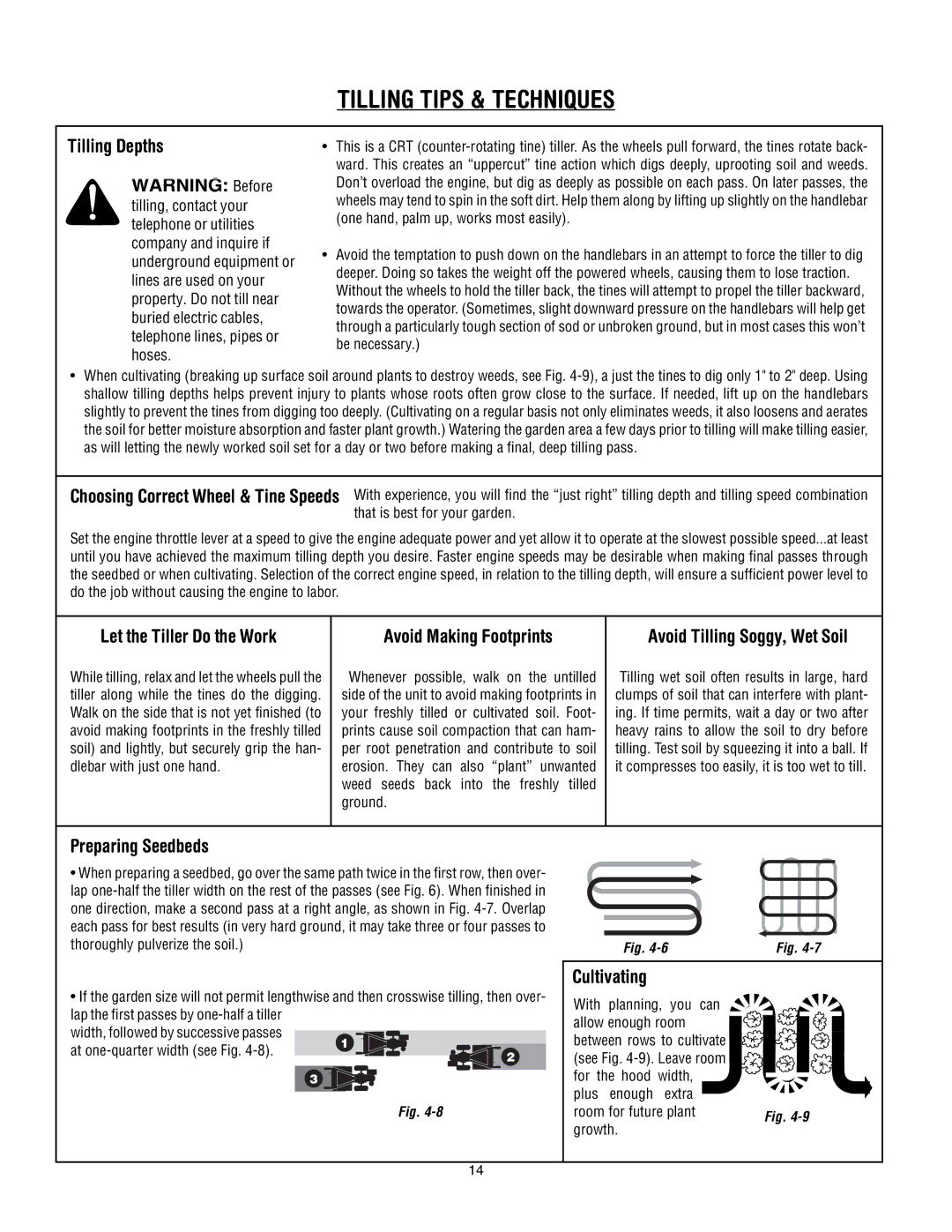640C - Tuffy CRT, 644A - Super Bronco CRT, 640C-Tuffy CRT, 640C-Tuffy specifications
The Troy-Bilt 640C-Tuffy and the 644A-Super Bronco CRT are exemplary models in the realm of cultivators and tillers, merging robust performance with user-friendly features. These machines are designed to make garden preparation easier and more efficient, catering to both amateur gardeners and seasoned horticulturists alike.The Troy-Bilt 640C-Tuffy boasts a powerful engine and features a rear-tine design, enabling the user to tackle tough soil with ease. One of its main features is the Carbide Tines that effectively break up hard ground and aerate the soil, promoting healthy growth. The 640C-Tuffy is sturdy, with durable construction that ensures longevity and resilience against tough garden conditions. It also includes a 10-inch tilling width, allowing it to cover substantial ground in shorter periods. Moreover, the model is equipped with adjustable tilling depth settings, accommodating various types of gardening tasks from breaking new ground to preparing existing beds.
On the other hand, the 644A-Super Bronco CRT highlights innovative technology that makes tilling a breeze. This model features counter-rotating tines which effectively mix compost and soil, offering improved mixing and aeration. The 644A is known for its robust performance, powered by a reliable engine, which delivers consistent torque even on challenging soil types. Additionally, its 18-inch tilling width allows for broader coverage, resulting in efficient garden preparation.
Both models are equipped with ergonomic handlebars designed for operator comfort. These handlebars are adjustable, allowing users of different heights to find a comfortable grip, thus reducing fatigue during extended use. The 640C-Tuffy and 644A-Super Bronco CRT are designed with ease of operation in mind, featuring intuitive controls and a lightweight design that makes maneuvering effortless.
In terms of maintenance, both models boast easily accessible components which allow for simple servicing and routine upkeep, ensuring long-lasting performance. Additionally, these cultivators are built with safety features, including protective shields that guard against debris.
In summary, the Troy-Bilt 640C-Tuffy and 644A-Super Bronco CRT shine in their ability to combine cutting-edge technology, user-friendly operation, and robust design, making them ideal choices for anyone looking to enhance their gardening experience. Whether preparing a new garden bed or maintaining an existing one, these cultivators are engineered to deliver exceptional results with ease and confidence.

